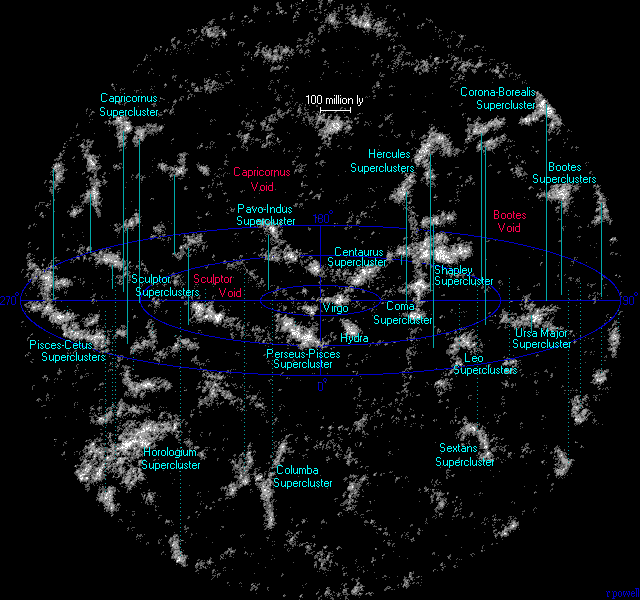Using data from the eROSITA X-ray telescope aboard the Spektrum-Roentgen-Gamma (SRG) observatory, astronomers have detected a previously unknown supercluster of galaxies. The newly found structure consists of eight galaxy clusters.
A supercluster is a large group of smaller galaxy clusters or galaxy groups; it is among the largest known structures of the Universe. The Milky Way is part of the Local Group galaxy group (which contains more than 54 galaxies), which in turn is part of the Virgo Supercluster, which is part of the Laniakea Supercluster. The large size and low density of superclusters means that they, unlike clusters, expand with the Hubble expansion. The number of superclusters in the observable universe is estimated to be 10 million.

This newly discovered supercluster resides approximately 4 billion light-years away from Earth and stretches for about 1.5 degrees from the north to the south on the plane of the sky, or 88 million light-years considering the physical distance between the furthest clusters in the chain.
Dr. Ghirardini and co-authors discovered this system using the preliminary data from the eROSITA Final Equatorial Depth Survey (eFEDS). eROSITA is the primary instrument on-board the Russian-German “Spectrum-Roentgen-Gamma” (SRG) mission which was successfully launched from Baikonur on July 13, 2019 and placed in a halo orbit around the L2 point. eROSITA will perform the first imaging all-sky survey in the medium energy X-ray range up to 10 keV with an unprecedented spectral and angular resolution.

They then examined X-ray, optical, and radio properties of the member clusters. “We use the X-ray data from eROSITA X-ray telescope, the optical data from the Hyper Suprime-Cam on the Subaru Telescope, and the radio data from the Low-Frequency Array (LOFAR) and the upgraded Giant Metrewave Radio Telescope (uGMRT) to study the multi-wavelength properties of the clusters members of this supercluster and bridge regions between these members,” the astronomers said.
“These early results show the potential of eROSITA to probe large-scale structures such as superclusters and the properties of their members. Our forecasts show that we will be able to detect∼450 superclusters with∼3000 member clusters located in the eROSITA_DE region at the final eROSITA all-sky survey depth, enabling statistical studies of the properties of superclusters and their constituents embedded in the cosmic web.”, they report in their paper with the title “Discovery of a Supercluster in the eROSITA Final Equatorial DepthSurvey: X-ray Properties, Radio Halo, and Double Relics” and first author Dr. Ghirardini.
